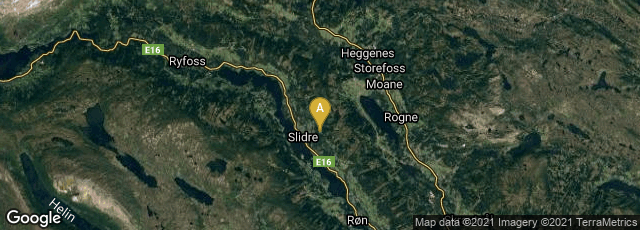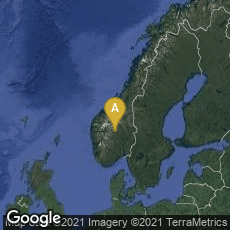

A runestone located east of the Einang Sound near Fagernes, in Oppland, Norway, the Eingang stone is notable for the early age of its runic inscription. It is is located within the extensive Gardberg site, placed on a grave mound on a ridge overlooking the Valdres valley. There are several other grave mounds nearby.
"The Einang stone bears an Elder Futhark inscription in Proto-Norse that has been dated to the 4th century. It is the oldest runestone still standing at its original location, and it may be the earliest inscription to mention the word runo 'rune'. Here the word appears in the singular. Additionally, the verb used in the inscription for the act of inscribing is faihido, which literally means 'painted'.[1] This may mean that the inscription was originally highlighted with paint.[2]
"The generally accepted reading of the inscription was proposed by Erik Moltke in 1938.[2] He conjectured that there had been four runes in the original inscription, before the first rune which is visible today. The reading is:
"Which translates as:
"As the stone is placed on a grave mound, it is natural to interpret it as a tombstone. Why the inscription does not name the buried person, but only the carver of the runes, remains an open question." (Wikipedia article on Einang stone, accessed 9-2020).